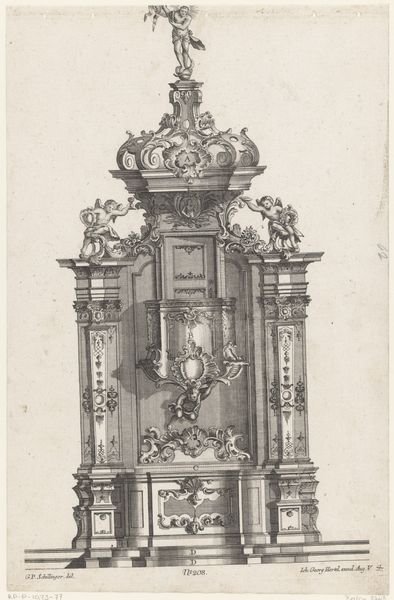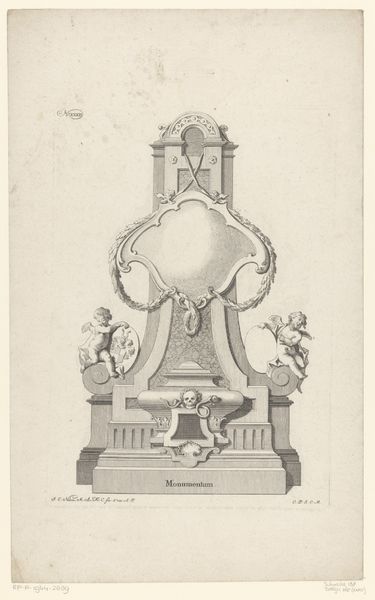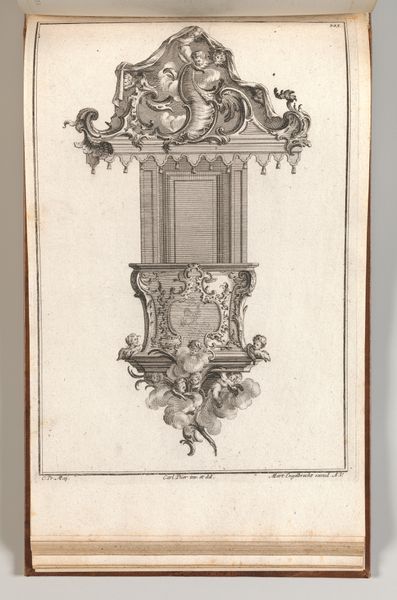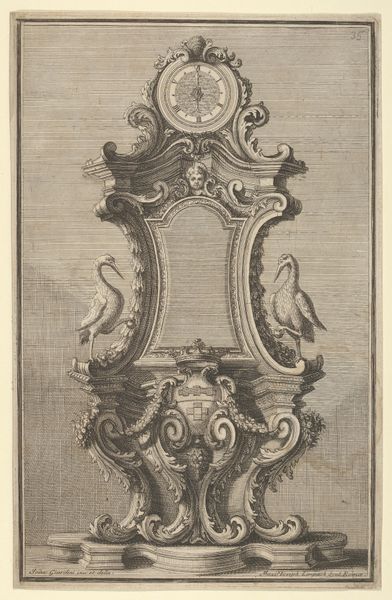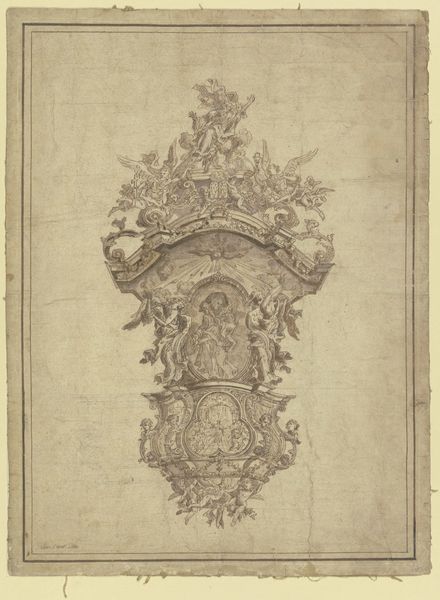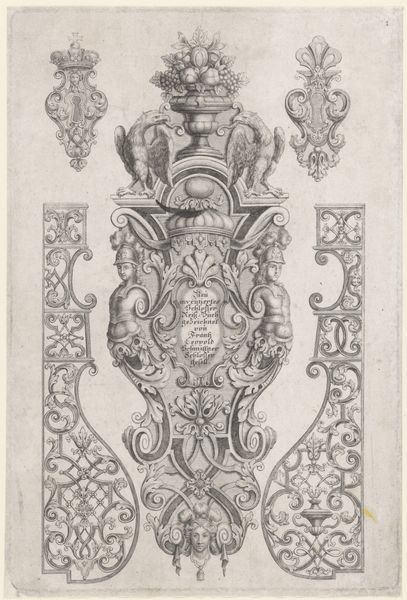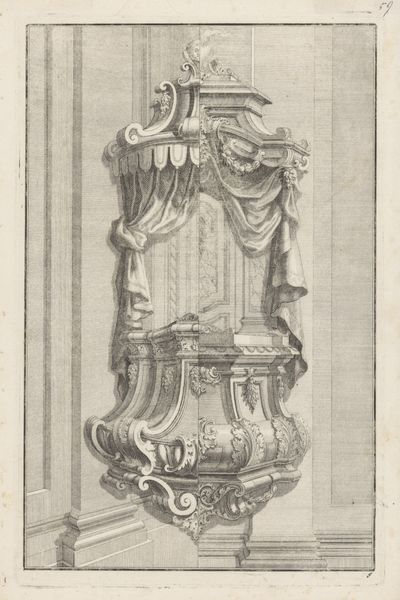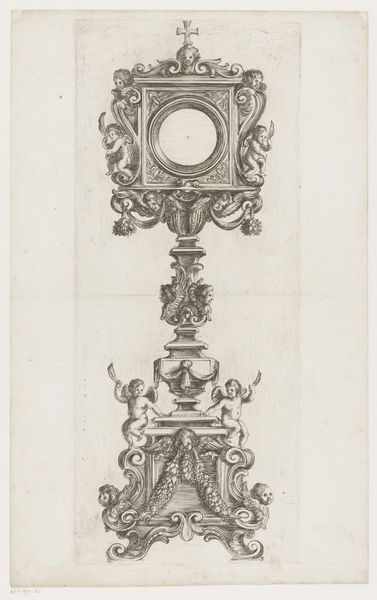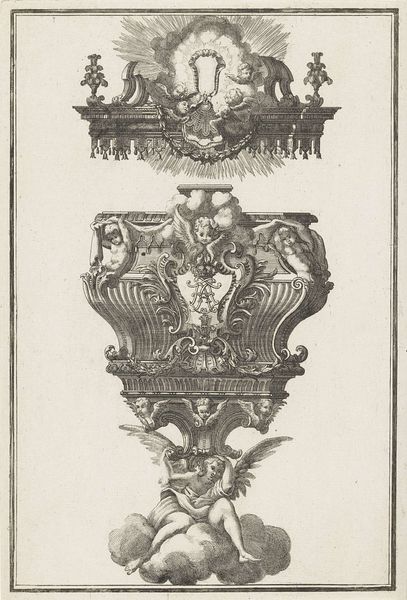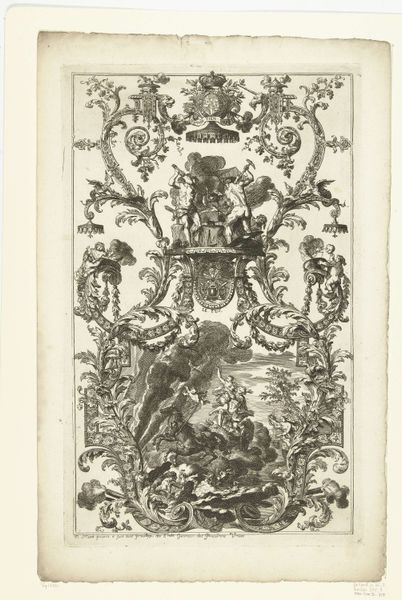
drawing, print, ink, engraving
#
drawing
#
baroque
# print
#
old engraving style
#
ink
#
pen-ink sketch
#
engraving
Dimensions: height 403 mm, width 225 mm
Copyright: Rijks Museum: Open Domain
Curator: This elaborate engraving, dating from 1724-1748, by Johann Bernhard Hattinger depicts a pulpit adorned with symbols of the Evangelists. The technique utilizes ink on either paper or print medium and embodies the Baroque style. Editor: Wow, it immediately strikes me as incredibly ornate, almost overwhelmingly so. There's so much detail packed into this design; a flurry of curves and embellishments. It’s a bit dizzying, honestly. Curator: The overwhelming nature is deliberate. Baroque aimed to inspire awe through grandeur and detail. Note the symbols carefully rendered: the angel for Matthew, the lion for Mark, the ox for Luke, and the eagle for John, all essential figures whose words defined the very framework. Editor: Yes, the figures of the evangelists are visible, but they seem almost secondary to the overall decorative program. I'm more curious about how this engraving might have been made. Engravings are so material intensive and such highly crafted artifacts, which always points back to systems of patronage and consumption in society. Curator: Absolutely. Each of these symbols carries immense weight. The Evangelists represent foundational narratives within Christianity, acting as visual shorthand for core theological concepts. Consider how this design not only instructs but also reinforces the established religious power structure. Editor: From a materialist view, prints are tools of dissemination; so examining its availability is of particular interest. Was this design widespread, or was it restricted to particular elite circles due to production constraints, and was it really meant to guide skilled craftsmen, who were, in essence, the workforce making objects under a clear division of labour? Curator: That is insightful. Indeed, it reflects a dialogue between spiritual ideals and the very real socio-economic realities. The images, produced via craft, are testaments of cultural memory. Editor: The production context definitely adds another layer to the symbolic content. Considering this piece from a material perspective deepens our understanding, wouldn't you agree? Curator: Indeed, acknowledging both the symbolic language and the means of production reveals a richer, more complete historical picture. Editor: A fitting synthesis for a piece so meticulously crafted and symbolically charged.
Comments
No comments
Be the first to comment and join the conversation on the ultimate creative platform.

